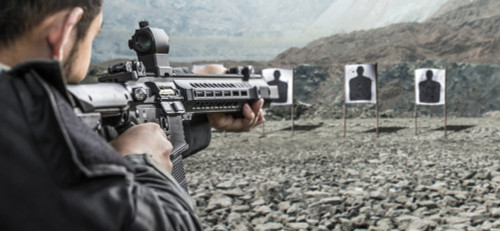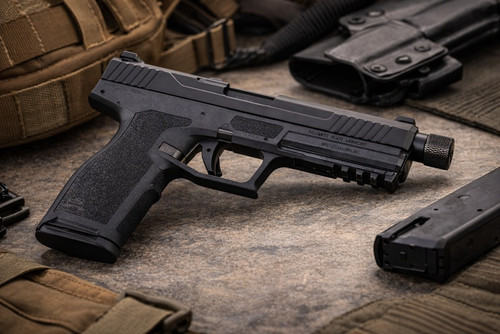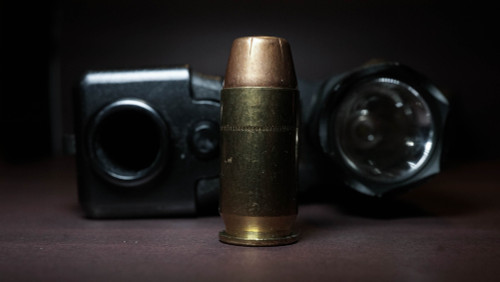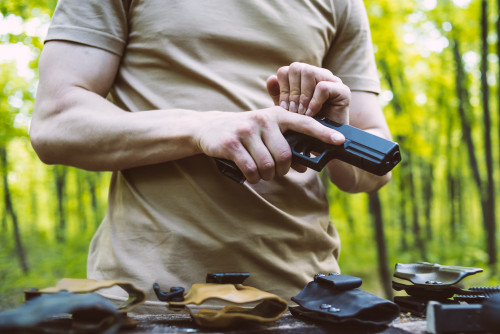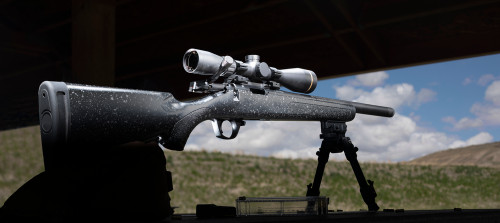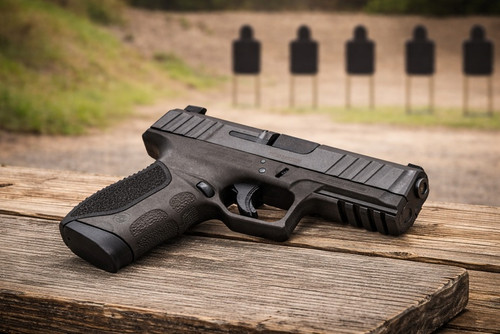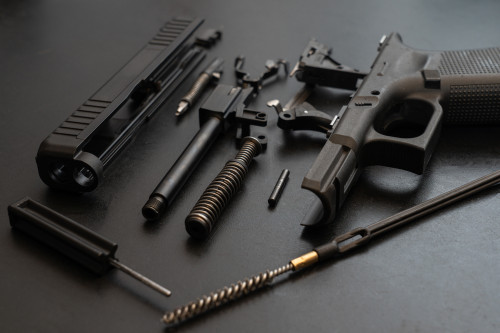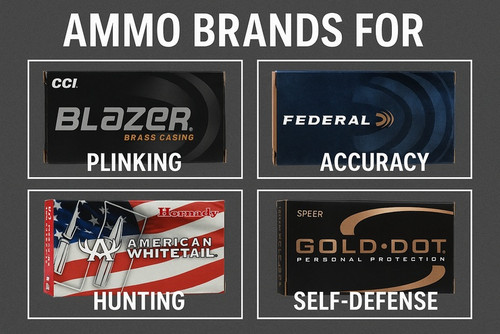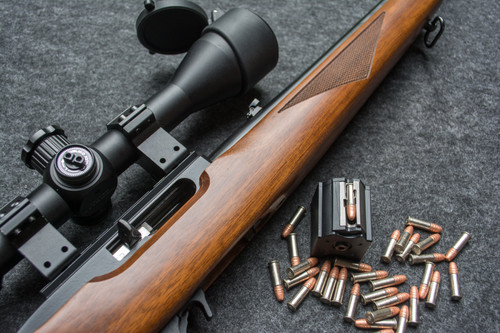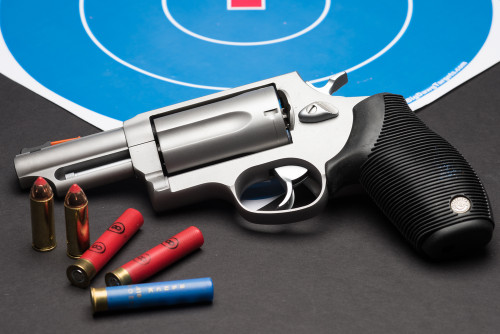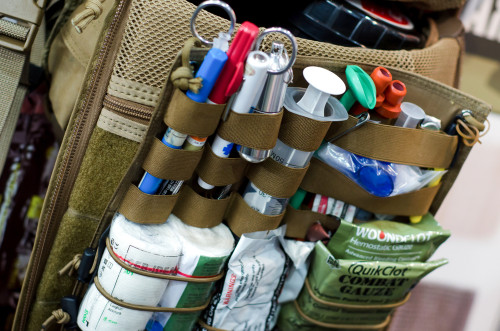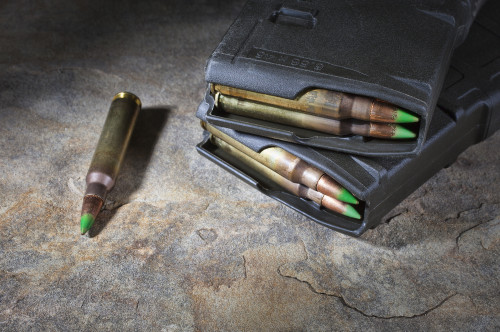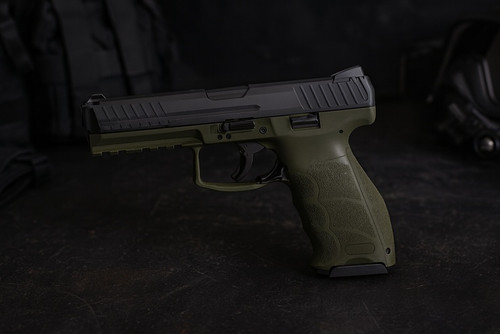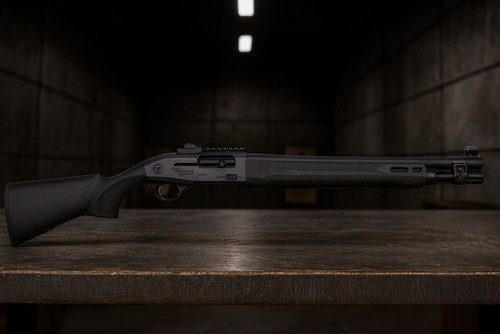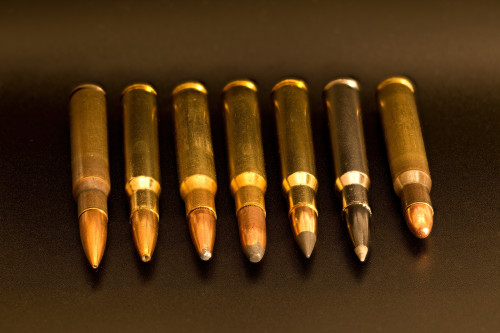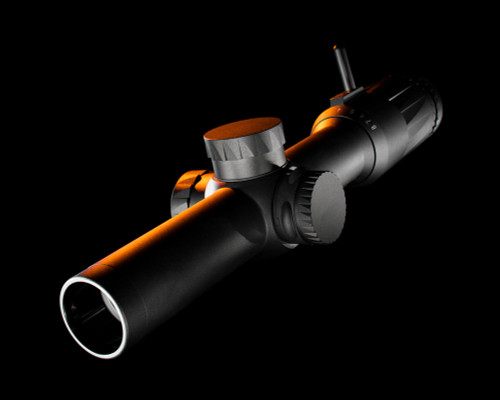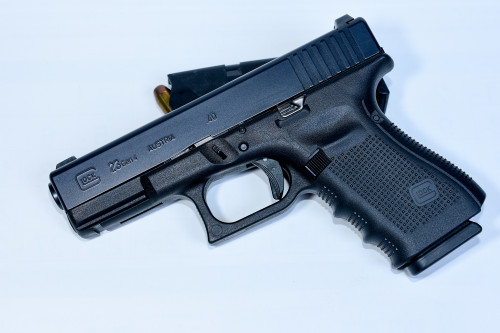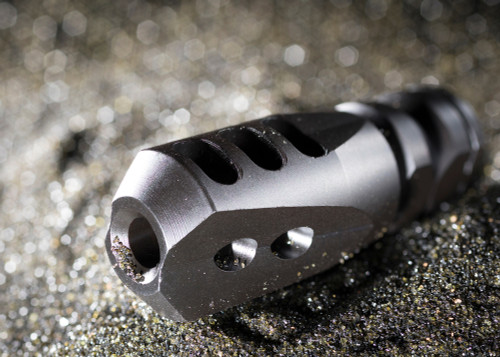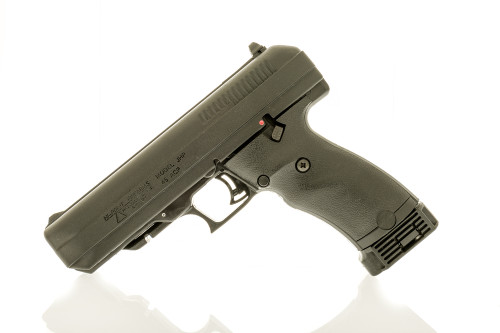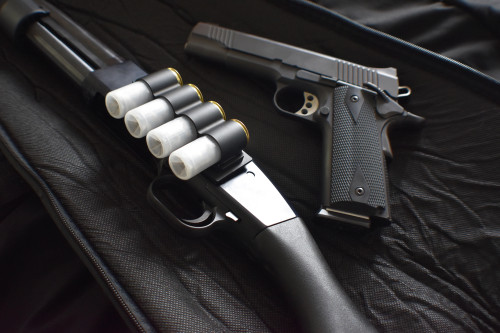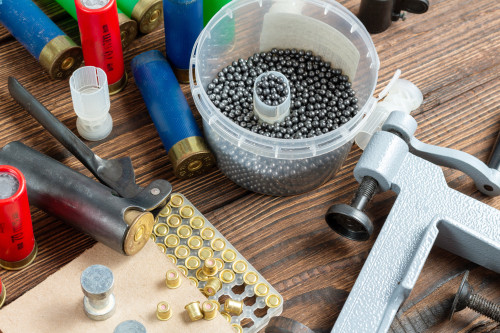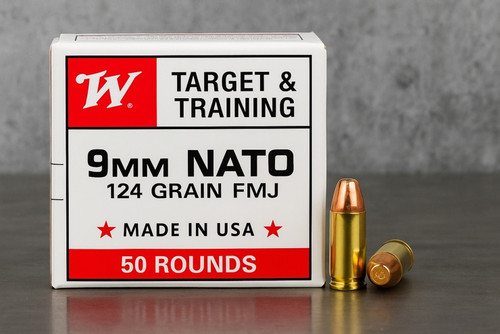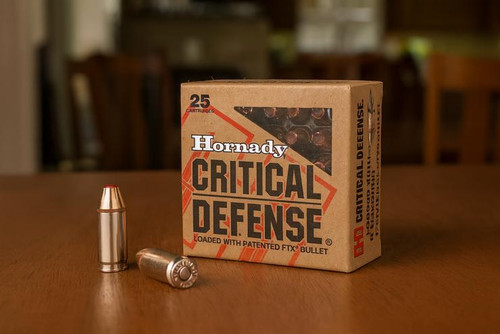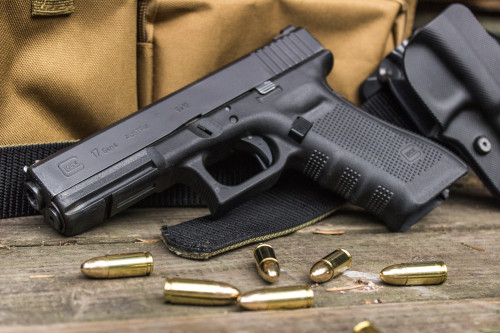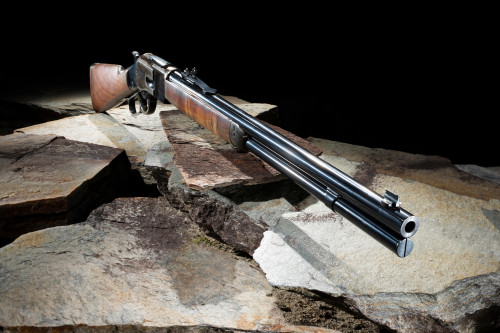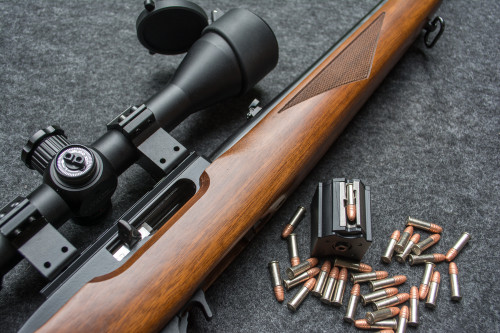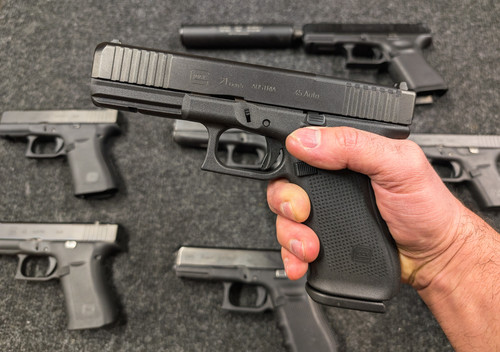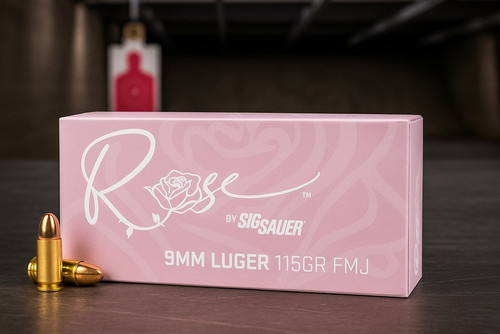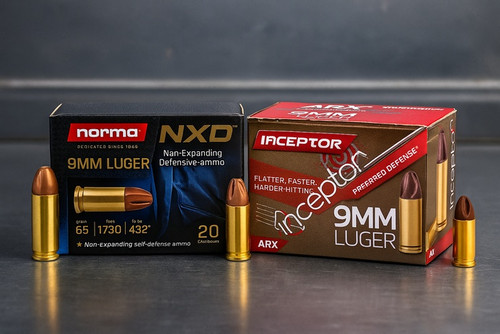Though “AR” stands for Armalite Rifle, it may as well stand for “America’s Rifle.” With millions of these firearms making their way into customer hands every year, having an AR-15 is pretty much a cultural requirement for an armed American citizen.
The bulk of ARs manufactured and sold today come with a 16-inch barrel — not because it’s the ideal length, but because of the National Firearms Act of 1934, aka the NFA. Until recently, the NFA was arcane legislation that only the real “nerds” of the firearms scene cared about. However, since the legal status of AR Pistols and short-barreled rifles (SBRs) has become the subject of hot debate, the NFA is becoming more relevant to the average gun owner.
It’s easy to unintentionally run afoul of the NFA when dealing with shorter-barreled AR-15 firearms. But that’s no reason to dispense with them altogether. If you’re looking for a compact, effective weapon, you simply need to know the key differences between AR pistols and AR short barreled rifles to remain safe and legal in your choice.
Let’s take a closer look at these weapons to determine what’s appropriate for your specific situation.
Legal Disclaimer
This article doesn’t constitute legal advice. We’re communicating informally here to make this information easy to grasp without getting lost in legal mumbo jumbo. With that said, it’s the legal mumbo jumbo that may decide your fate in court.
We’ll be as accurate as we can, but for clarification, cross-check the information here with actual federal, state, and local laws. If you have additional questions or concerns, we recommend consulting with a local attorney experienced in firearms law.
The National Firearms Act of 1934 (NFA) Explained
A good starting point is understanding the details and key provisions of the National Firearms Act of 1934.
The first notable gun control act passed by the federal government, this 90-year old statute places transfer restrictions, taxation policies, and registration requirements on certain types and configurations of firearms sold in the United States. The affected weapons must be registered with the Bureau of Alcohol, Tobacco, Firearms, and Explosives (BATFE, aka the ATF), and a $200 tax must be paid before the weapon can be taken home. The weapons covered by the Act fall into six (sometimes vague) categories:
- Machine Guns: Defined by the Act as any firearm which discharges multiple rounds with one press of the trigger, machine guns were the primary concern of the Act. This category includes M16s, real Tommy Guns, MAC-10s, and the like. Also, any component that turns a semi-automatic weapon into full-auto is legally considered a machine gun. A piece of metal called a “drop in auto sear” is an example. Controversially, bump stocks are also included in this classification, but will likely be stricken from the NFA pending the outcome of Garland vs Cargill in the Supreme Court.
- Silencers: Despite not being a firearm, silencers are also covered by the Act. Technically known as suppressors, silencers are basically car mufflers, but for guns. Fun fact: Both were invented by the same person, Hiram Percy Maxim. The point here is that legally purchasing a silencer requires complying with the NFA.
- Short-Barreled Shotguns: Known as “SBSes” or “SBS”, short-barreled shotguns are any shotgun with a stock, and a barrel under 18 inches in length. Any shotgun with an overall length under 26 inches is considered an SBS and subject to the Act.
- Short-Barreled Rifles: Known as “SBRs”, these are any firearm with a buttstock and either a rifled barrel less than 16 inches long or an overall length under 26 inches. The overall length is measured with any folding or collapsing stocks in the extended position. The category also includes firearms which came from the factory with a buttstock later removed by the user.
- Destructive Devices: RPGs, bombs, grenades, and the like. Fun fact: You can actually purchase live grenades as long as you follow the NFA. That means paying the $200 tax per unit and registering it (plus the cost of the grenade). This category also includes any gun over .50 caliber unless it’s been individually determined as suitable for hunting, (i.e. a .700 Nitro Express rifle).
- Any Other Weapon: A catch-all class of NFA items including disguised guns such as cane guns, pen guns, cell phone guns, and the like. It also includes the Serbu Super-Shorty, which is a small shotgun with no stock and a vertical grip. Also, any pistol that gets fitted with a vertical grip, whether an AR pistol or a GLOCK.
AR-15 Pistol vs. SBR: What’s The Difference?
How does the National Firearms Act apply to AR-15 pistols and SBRs? Let’s start by learning the difference:
Short-Barreled Rifles
As we said, a short-barreled rifle is an AR-15 (or any rifle) with a buttstock and either a rifled barrel less than 16 inches long or an overall length of 26 inches or less.
For short-barreled AR-15 rifles, the process for obtaining them is rather complex. Let’s say you see (or want to build) an AR-15 with a 14.5-inch barrel and place a quality stock on it like a Magpul SL or B5 SOPMOD. In this case, it’s a short-barreled rifle since it includes a proper stock. Before assembling or taking possession of the weapon, you’ll need to get your NFA paperwork in order and prepare for a bit of a wait. Typically it takes about 30-60 days, which is certainly a bit of time — but it’s a lot less than the traditional tax stamp for a factory SBR or suppressor.
AR-15 Pistols
An AR-15 is considered a “pistol” when it either lacks a stock completely (i.e., an AR-15 with a bare buffer tube only), or uses an arm brace, like those currently manufactured by SB Tactical.
For short-barreled AR-15 pistols, the process is technically easy. Legally classified as a pistol, purchasing one is no more difficult than any other normal firearm at a gun shop. Select your AR pistol, give it a run at the range (if they let you try before buying), fill out the 4473 form, wait for the background check to process, and off you go. Your mileage may vary depending on your state, of course.
You can also usually make an AR-15 pistol at home with little fuss. However, due to recent attempts by the ATF to reclassify AR-15 pistols with attached arm braces as SBRs, the process can be fraught with uncertainty. Though the decision is under an injunction while the courts figure out the constitutionality of the ATF’s classification, most manufacturers have resumed selling complete AR pistols.
Part of the issue is that the government currently has no specific definition of what constitutes an arm brace. Generally, the firearms industry classifies an arm brace as a device which includes a provision or mechanism to strap the AR pistol to your arm or a method of balance against your arm.
So if you’re going to buy one, which one is best? There are pros and cons to each short-barreled AR configuration.
AR-15 Pistols: Pros and Cons
Most likely, if you see a short-barreled AR-15 at your local firearms dealer, it’s an AR-15 pistol — either with or without an arm brace attached. They are often showcased since they are treated no differently under the law than a standard handgun for purchase, movement, and possession. In most states, the purchase process at a retailer is no different than when buying a GLOCK 19 pistol.
The process goes like this:
- Select your AR pistol.
- Fill out the legally-required ATF 4473 background check form.
- The dealer inputs your information into the federal or state web portal. (They all connect to the same places, but in some states, the state provides the gateway).
- The clerk waits a few minutes for the PROCEED signal to appear on their screen.
- Pay for your new AR pistol and take it home.
There could be a state-level waiting period, but the overall process is the same. Some people wrongly regard AR pistols as a “workaround” of the SBR rules and regulations, but that’s far from the truth. AR pistols, like a lot of firearms innovations, were developed out of necessity.
A Brief History of AR-15 Pistols
Like many firearms, the AR-15 pistol was developed for a specific use case, and later found widespread popularity.
The first AR-15 in a “pistol” form was developed in the 1970s by the legendary Mack Gwinn. The pistol, though built in a bullpup configuration (with the magazine behind the trigger mechanism), was made to be braced against the arm when operated. Called the Bushmaster Arm Pistol, the gun was designed for downed military pilots who needed a compact and potent survival weapon that packed more of a punch than a standard handgun or revolver. Yes, this weapon lent its name to Mack’s subsequent company, Bushmaster, the manufacturer of AR-15 rifles we know today.
Though the Bushmaster Arm Pistol wasn’t ultimately adopted by the military, the concept of a compact firearm chambered in 5.56mm and able to accept standard AR-15 magazines intrigued firearms manufacturers and dedicated gun enthusiasts alike. In the 1980s, many companies would simply delete the stock of an AR, leaving a bare buffer tube, put a short-barreled upper on the lower receiver, and sell them as “Mega Pistols.”
Legal Status of AR Pistols and Pistol Braces
At one point, firearms owners were improvising ways to brace AR-15 pistols to themselves without running afoul of the NFA. Various methods were tried, but in 2013, Marine veteran Alex Bosco debuted his groundbreaking AR arm brace, the SB-15.
Designed as an adaptive shooting tool, the SB-15 enabled an AR pistol owner to easily strap the pistol to their arm, providing another point of stability. The SB-15 resembled an actual firearm stock, but due to its rubber construction and arm strap, was not considered one, even if users would sometimes use the brace as such. This unfortunately led to a short-lived ATF ruling in 2015 that determined if an AR-15 pistol was shouldered, it was considered a short-barreled rifle. If it was not shouldered, it somehow became a pistol.
To say this created some confusion and irritation would be putting it mildly. The decision was eventually rescinded, and the ATF decided that however the user of a braced pistol decided to use the pistol, it was up to them, and would not change the legal status of the gun.
2022 Executive Order
However, things took a turn in 2022. Emboldened by a newly-confirmed ATF director, President Biden issued an executive order directing the ATF to add further regulations to AR-15 pistols (and other large-format pistols) without having Congress follow the traditional lawmaking process to draft and pass laws to do the same.
After many months, the executive order dropped, confirming the worst fears of many gun owners. It declared that any AR pistol fitted with a brace (or even more vaguely, things like optics or slings) would be regarded as a short-barreled rifle, subjecting it to the requirements of the National Firearms Act.
As a “courtesy,” the ATF agreed to waive the $200 registration tax, permitting those affected (up to 40 million people, according to some estimates) to become legally compliant for free in a 120-day amnesty period. Some contested on the grounds that the NFA is technically a tax, and if no tax is collected, it is therefore invalid. The bulk of the challenges came from the industry and gun owners, both of whom were upset that millions of people were turned into felons with the stroke of a pen — instead of by the traditional lawmaking process of Congress.
Current Legal Challenges
That said, as of February 2024, there is a legal stay on this order (pending appeal), and pistol braces are permitted once again while the process works through the court. It is likely to be overturned for agency overreach.
The most prominent challenge, Mock v Garland, partially rests on the “invalid tax” argument we mentioned above. It’s solid enough thus far for federal judges around the country to grant an injunction on the enforcement of the executive order. With that in place, gun shops and online retailers have begun selling “complete” AR pistols again. However, the decision could be reversed, placing you in legal jeopardy if you own an AR-15 pistol. The decision to buy is yours, of course.
Current confusing legal status aside, there are key advantages and disadvantages to purchasing and owning an AR-15 pistol.
The Advantages of an AR-15 Pistol
A standard AR-15 rifle with a 16-inch barrel is a large firearm, especially with an adjustable stock extended to maximum length. With this version, you’ll be manipulating a firearm around 35 inches in length. If you’re living in a condo or apartment setup, you’re undoubtedly familiar with narrow corridors and stairwells, and moving through those tight spaces with a nearly 3-foot long AR-15 rifle could prove challenging.
The rifle’s platform’s ergonomics and soft recoil can present an advantage for home defense, but this puts you in a bit of a conundrum. You want something a little more compact, but not so much as to lose the accuracy and recoil management.
Enter the AR-15 pistol, which offers several advantages, including:
- Balance: An AR pistol presents a fair compromise for personal and home defense. As a matter of physics, the shorter the barrel, the shorter the effective range. But realistically, you won’t engage threats much beyond 10-20 yards, well within the effective range of a short-barreled (say 10.5 inches) AR pistol. You’ll have a compact and powerful weapon that is far superior to a standard pistol in terminal performance, but without the ungainly configuration of a standard 16-inch AR-15 rifle.
- Ammo Options: Loaded up with a proper defensive 5.56mm load such as the famous 77-grain offering from Black Hills Ammunition, and you’ll be set to defend yourself, your property, and those you care about.
- Legality: As of February 2024, an AR-15 pistol is legally classified as a pistol in most states, meaning there are no more legal burdens to ownership than with a standard pistol. That said, some states, such as Illinois, classify any AR-15 as a contraband, so until the law is successfully nullified in court, an AR-15 pistol may be a no-go there.
NOTE: An arcane requirement exists for SBR owners to notify the ATF if they plan to move the SBR across state lines. For example, if you live in Florida and wish to take your SBR for shooting fun in the Appalachian mountains of West Virginia, you need to notify the ATF in writing, and wait for their approval, before you can legally move the weapon. The approval is automatic, but does take time to receive, adding an inconvenience to your trip planning. If you have an AR pistol, you don’t need to worry, as you can travel normally with the weapon, observing any state laws and travel regulations, of course.
The Disadvantages of an AR-15 Pistol
All that said, there are some practical and legal disadvantages to an AR pistol, some of which may not be readily apparent.
- The Brace Problem: If you purchase an AR-15 pistol with an arm brace, you may occasionally shoulder it as if it were a rifle. But even though your brace may look like a stock, it doesn’t function like one. A brace is made of either a slim piece of plastic, or rubber, with an arm strap through it. The rubber is bouncy and flexes with every shot, leading to accuracy issues. The slim plastic of say, a KAK arm stabilizer, cuts into your shoulder and is flat-out unusable when wearing body armor. In addition, you can’t make modifications to an arm brace to stiffen it, as this would constitute a circumvention of the National Firearms Act, since you’re basically making a stock.
- Age Restrictions: Also, there are legal considerations when purchasing an AR-15 pistol as opposed to a 16-inch AR-15 rifle. For example, under current federal law, a pistol cannot be sold at retail to anyone under the age of 21. A lower court ruling says this law is unconstitutional, but the process of nullifying it has yet to kick in, so we’re stuck with it for now. So if you’re an 18-21-year-old looking to purchase a new AR pistol at retail, you’re out of luck. In most states, you could purchase one in a private sale, but remember to check the laws. Some states prohibit 18-21-year-olds from even possessing a pistol.
- Waiting Periods for Pistols: When an individual purchases a pistol without a concealed carry permit, they are often subject to waiting periods. For example, in Florida, you can purchase a 16-inch AR-15 rifle and take it home the same day pending your background check clearance. But you have to wait a few days if you purchase an AR-15 pistol without a concealed carry permit. Both weapons are essentially the same, save for barrel length differences and the presence of an arm brace, but the law says otherwise.
- Possible Contraband: Since the rule concerning the NFA status has not been adjudicated, you could accidentally find yourself in possession of a contraband firearm — if the courts do not rule in favor of gun owners. Since the rule technically went into effect, and the injunction only prevented enforcement of the rule, you couldn’t backtrack and surrender/dismantle the weapon without exposing yourself to legal risk. If the rule stands, your AR pistol becomes an SBR. A key nuance of federal law is that a pistol can be legally modified to become a rifle, but the reverse is not allowed. The amnesty of 2023 did allow that process, but the ATF has indicated if the pistol brace rule stands, an amnesty will not be enacted all over again.
AR-15 SBRs: Pros and Cons
Legally building or buying a short-barreled AR-15 rifle is an onerous process. But if you pay attention to detail, the most painstaking part will be the NFA-imposed waiting period. At the end of the process, you’ll have the ideal defensive AR-15, complete with a real stock and not a brace as a poor substitute.
Here’s a comprehensive look at why an AR-15 SBR might be a better choice for you.
A Brief History of AR-15 SBRs
Back when the AR-15 was first developed in the 1950s by Eugene Stoner, the specified barrel length was 20 inches — to accelerate the .223 round to the required velocity.
However, when the AR-15 (with fully automatic features) was finally accepted into military service as the M16, a common complaint was about the barrel length. A larger rifle proved cumbersome in the dense jungles of Vietnam, and the large barrel would often get snagged on parts of the environment. Enterprising Army units would literally cut down the barrels to 18 inches or less. Similarly, special operations forces (with their own budgets and procurement processes) requested factory-made short-barreled versions of the M16. The loss of velocity in these short-barreled rifles was minimal, as engagements often happened at close ranges, especially in the jungle and urban areas. A more maneuverable rifle proved advantageous overall.
By the late 1970s, the 5.56mm M855 round, offered a more powerful variant of the M193 round issued to the troops during the war. This spurred the development of a shorter-barreled service rifle, with the military eventually choosing the M4 design, mainly because it was functionally identical to the M16, but with a shorter barrel. At 14.5 inches in length, it was a fair compromise in length versus performance, especially paired with newer ammunition such as the M855.
Citizens hoping to emulate the M4 in a semi-automatic version immediately ran into the barrel length restrictions of the NFA. Some took the easy route and simply purchased AR-15s with a 16 inch barrel. Companies such as Colt, capitalizing on these “clone” customers, sold semi-automatic M4 variants functionally identical to the real M4, save for the lack of full-auto capability and the addition of a 16-inch barrel. Those looking to stay true to the spec however, had to go the SBR route.
The National Firearms Act SBR Process
To get your own short-barrelled AR-15, you’ll need to contend with the NFA. Before you start the NFA registration process, choose the parts for your yet-unbuilt AR-15 SBR, or select a factory-produced model. This is essential because the NFA Forms require you to describe the SBR, including its barrel length, overall length, and the serial number on your lower receiver.
Buying vs. Building an SBR
On a factory-built AR-15 SBR, the paperwork process is easy. The manufacturer has this data on hand, and your local gun shop will provide it for you as you fill out your ATF Form 4.
For an AR-15 SBR you intend to make yourself, it’s a little more difficult. The serial number part is easy; just purchase a lower receiver from your local gun shop or have them transfer one from an online vendor. After a normal background check, you can take the lower receiver home. Then you can acquire the parts for your future SBR, but legally you cannot assemble it until the ATF Form 1 is approved (more on that later). But you will have the components and can derive the barrel length and overall length without assembling them.
Legal Note on Building SBRs
The ATF has prosecuted people for “constructive possession” in the past. Basically, this means if you have all the components to make an NFA item (such as an AR-15 SBR), you may as well have a complete NFA item in the eyes of the ATF.
To avoid legal trouble, most SBR makers will purchase everything they need to determine the lengths, and save the rest of the components for when the form gets approved. For example, you can buy everything but the trigger and fire control selector — without those two parts, the rifle won’t function. Or, go further and acquire just a lower receiver, then spec out the remaining parts online and derive the length from the descriptions. When the form comes back approved, you can purchase the parts.
The “Making” Process: Building an AR-15 SBR
Once you have the critical data for your SBR, the NFA process can begin in earnest. Here’s how it works:
Stage 1: Fill Out Form 1
To “make” an SBR (“making” is the ATF term for when an individual builds an NFA item for their own use) legally, you need to fill out the relevant details on a Form 1.
The Form 1 (Application To Make And Register A Firearm) is the starting point for your build. You’ll need to know the specifications of the rifle you intend to make, including caliber and length.
Stage 2: Put Your Name on It
You’ll also need to have a licensed gun shop engrave your name (or entity name) and other information on the lower receiver (without the stock). Additionally you’ll need the name of your jurisdiction’s chief law enforcement officer to notify them that you possess an SBR. The State Attorney checks for this, by the way. You’ll also need a 2x2 passport photo of yourself, along with a completed FD-258 fingerprint card to attach to the form.
Stage 3: Pay Uncle Sam
Once the form is completely filled out, you’ll need to submit a tax payment to the tune of $200. If you’re using the ATF eForms portal, it’s simply another e-commerce checkout process where you can use your credit card. If you are filling out your Form 1 on paper, you’ll need to include a check or money order.
PRO TIP: Use a money order, since it’s as good as cash and the IRS (who actually takes the payment) will immediately mark the form as paid.
Stage 4: Wait for the Background Stuff
After that, the ATF contacts the FBI who will perform a normal firearms background check on you. Then, clerks at the NFA Division of the ATF will examine your Form 1 and any other associated paperwork for accuracy. This step is done by hand and can delay the process. Then, your yet-to-be built SBR will be registered in a federal database known as the National Firearms Registration And Transfer Record (NFRTR).
After many months of waiting, you’ll receive a notification from the ATF via email or postal mail that your form has been approved. The form will have a stamp on it, showing you paid the $200 tax, and an approval signature from an ATF official. Only then can you legally make your SBR.
Tips on Legal Usage and Gun Trusts
Here’s an important caveat. When you filled out the Form 1, you did so as an individual. The SBR is registered to you in a federal database. Legally, the weapon cannot be used by someone else unless you are physically present.
For example, if you go to the range with your wife, she can use the SBR. But she cannot take the SBR to the range on her own. It’s even legally questionable whether she can have access to the safe storing your SBR.
In most gun-owning households, all adults (and any suitably educated children) will have firearms access — however, the law simply doesn’t see it that way when it comes to NFA items like SBRs. While it’s beyond the scope of this article, gun trusts can help circumvent some of the legal difficulty here. In essence, gun trusts provide legal ownership and usage of your SBR to multiple people, by registering the firearm to an “entity” (a group of people) rather than you alone (an individual).
Some makers take an alternative route and assemble their AR as a pistol, apply for their Form 1 to turn the pistol into an SBR, and put a stock on the pistol following approval. This way they can use and test most of the components of their gun while waiting.
AR-15 SBR Advantages
If the onerous NFA process doesn’t scare you off (as the ATF hopes it will), you’ll find that owning a true AR-15 SBR offers a tactical advantage over an AR-15 pistol.
- Effectiveness: Since your SBR will have a proper stock, you’ll own a compact and effective personal defense weapon. Additionally, most instructors teach close-quarters work with AR-15 SBRs. Having a similar platform will enhance your training efficiency, since they won’t have to adjust their training techniques to accommodate an AR-15 pistol with a brace.
- Continuity for Veterans: If you were in the military, you were most likely issued a 14.5” M4A1. Building or buying an SBR in that configuration (save for not having full-auto capability) provides training continuity in the civilian world. If you’re a clone rifle enthusiast who replicates military-issue weapons, SBRs are often the way to go, being as close as possible to the real thing.
- Simplifying NFA Transfers: After you go through the NFA process the first time, you’ll have lined up your paperwork, trust forms (if applicable), and eForms parameters — which makes subsequent NFA transfers easier.
AR-15 SBR Disadvantages
Despite the benefits we covered, there are definite practical and legal disadvantages to owning an AR-15 SBR:
- Notifying the ATF: The biggest hurdle after approval is notifying the ATF every time you move the firearm over state lines, even if it’s just for a day trip. This requires Form 5030.20 and takes about 12 days to approve. Exemptions are made for declared emergencies and the ATF prioritizes the form during those events. You can file for a range of dates if you know you’ll be going back and forth, though. For example, if you live in north Florida and your favorite range is just over the state line in Valdosta, Georgia, you can file that Form 5030.20 to cover a period of many months, making your life easier.
- Database Entry: Your SBR ownership is stored in a federal database. If the unthinkable happens and private ownership of guns is severely restricted in the country, the Feds will likely contact you first. However, there is a chance the SBR requirement could be stricken in the next decade, pending decisions regarding AR-15 pistols.
- Ownership Issues: You can’t lend your SBR to a friend like you would a 16-inch AR (in most states) unless your friend is named in your NFA trust documents. You can’t even lend it to someone in your household unless the same requirements are met. They can use the weapon, but you must be present, (i.e. next to them at the range). Also, you must have the NFA paperwork accessible at all times (regardless of where you are with the weapon). A copy of the approved Form 1 or 4 is acceptable. Many ranges won’t allow you inside with an NFA item without your paperwork. Some states outright prohibit NFA item ownership even if the owner meets federal requirements.
Final Thoughts
A compact AR-pattern weapon is a solid choice for defense of self and property. Most engagements in the civilian world take place at close ranges, making a more compact platform with an effective caliber such as 5.56mm ideal.
An AR pistol has the most flexible and least restrictive process for obtaining an AR-pattern weapon with a short barrel. You’ll have some issues with the ergonomics, and potentially face renewed efforts to restrict them under the NFA, but these are the trade-offs for the ease of purchase.
An SBR offers the best in ergonomics and functionality but with significantly higher financial and legal burdens. When deciding which model to buy, you’ll need to consider factors like convenience, legal flexibility, and ergonomics — so choose wisely.
Once you’ve made your decision, you can load up your new AR-15 pistol or SBR with quality ammo from a dealer you can trust. Browse .223 and 5.56 rounds today at Pro Armory and get the best deals on bulk cases.
Do you want to learn more about firearms without taking an expensive and time-consuming in-person class? Pro Armory offers online training to help you become safer and more proficient with your firearm of choice. Learn the material at your own pace, in your own home, with your own guns (unloaded, of course). Learn safety, tips, and tactical maneuvers from veterans and professional shooters all online. Sign up for our newsletter to learn more about training.



